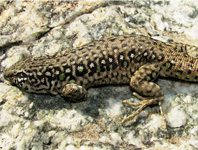Abstract
Travassosinema claudiae n. sp. is described from the hindgut of the polydesmid millipede Parafontaria laminata (Attems, 1909) (Polydesmida: Xystodesmidae) from Aichi prefecture, Japan. Females of the new species resemble T. thyropygi Hunt, 1996 and T. travassosi Rao, 1958 by lacking lateral alae and the constriction of the body posterior to the level of the vulva. T. claudiae n. sp. differs from T. thyropygi by its shorter body and tail, and larger eggs. Also, the nerve ring is located in the procorpus-isthmus junction in opposition to T. thyropygi, where the nerve ring is just anterior to the basal bulb. T. claudiae n. sp. can be differentiated from T. travassosi by its shorter eggs and less extended cephalic umbraculum. Males of T. claudiae n. sp. are more similar to those of T. dalei Spiridonov & Cribb, 2012 by having a similar body length, form of the oesophagus, structures around the cloaca (mid-ventral, digitiform pre-cloacal pair of papillae, a large pair of adcloacal papillae and the anterior lip of cloaca ornamented and with a spatula-like post-cloacal projection), absence of spicule and gubernaculum, and presence of a tail filament. T. claudiae n. sp. differs by the position and type of ornamentation of the large ornamented pair of papillae, by lacking the minute pair of papillae in the tail filament and by the presence of lateral alae. Description is supplemented by SEM images. The phylogeny of the species is inferred by D2-D3 28S LSU rDNA and 18S SSU rDNA. This constitutes the first species of the genus Travassosinema Rao, 1958 described from Japan.
References
Adamson, M.L. (1987) Oxyuridan (Nematoda) parasites of Scaphiostreptus seychellarum with comments on the families Pulchrocephalidae Kloss, 1959 and Travassosinematidae Rao, 1958. Canadian Journal of Zoology, 65, 2747–2754.
https://doi.org/10.1139/z87-416Adamson, M.L. & Van Waerebeke, D. (1987) Indiana roselyneae n.sp. (Oxyurida; Nematoda) from Madagascan Gryllotalpoidea (Orthoptera; Insecta) with comments on the structure of the cephalic extremity of Indiana. Canadian Journal of Zoology, 65, 2755–2759.
https://doi.org/ 10.1139/z87-417Adamson, M.L. & Van Waerebeke, D. (1992) Revision of the Thelastomatoidea, Oxyurida of invertebrate hosts 2. Travassosinematidae, Protrelloididae and Pseudonymidae. Systematic Parasitology, 21, 169–188.
https://doi.org/10.1007/BF00009698Blaxter, M.L., De Ley, P., Garey, J.R., Liu, L.X., Scheldeman, P., Vierstraete, A., Vanfleteren, J.R., Mackey, L.Y., Dorris, M., Frisse, L.M., Vida, J.T. & Thomas, W.K. (1998) A molecular evolutionary framework for the phylum Nematoda. Nature, 392, 71–75.
https://doi.org/10.1038/32160Capella-Gutiérrez, S., Silla-Martínez, J.M. & Gabaldón, T. (2009) trimAl: a tool for automated alignment trimming in large-scale phylogenetic analyses. Bioinformatics, 25, 1972–1973.
https://doi.org/10.1093/bioinformatics/btp348Hall, T.A. (1999) BioEdit: a user-friendly biological sequence alignment editor and analysis program for Windows 95/98/NT. Nucleic Acids Symposium Series, 41, 95–98.
Hunt, D.J. (1981) On Artigasia horridospina n.sp., Longior semialata n.sp., Mentecle magnifica n.sp., Paraxyo ensicrinatus n.sp. (Oxyurida: Hystrignathidae) and Pulchrocephala ? pulchrocephala Travassos, 1925 (Oxyurida: Pulchrocephalidae). Systematic Parasitology, 3, 33–52.
https://doi.org/10.1007/BF00012238Hunt, D.J. (1983) Observations on the genus Indiana Chakravarty, 1943 (Oxyurida: Pulchrocephalidae). Systematic Parasitology, 5, 215–221.
https://doi.org/10.1007/BF00009353Hunt, D.J. (1993) Two new species of Travassosinema Rao, 1958 (Nematoda: Travassosinematidae) from diplopods in Sulawesi and Papua New Guinea. Afro-Asian Journal of Nematology, 3, 196–200.
Hunt, D.J. (1996) Travassosinema thyropygi sp. n. (Nematoda: Travassosinematidae) from a spirobolid millipede from Vietnam with SEM observations on Heth imias Spiridonov, 1989 (Nematoda: Hethidae). Fundamental and Applied Nematology, 19, 7–14.
Jex, A.R., Schneider, M.A., Rose, H.A. & Cribb, T.H. (2005) The Thelastomatoidea (Nematoda: Oxyurida) of two sympatric Panesthiinae (Insecta: Blattodea) from southeastern Queensland, Australia: taxonomy, species richness and host specificity. Nematology, 7, 543–575.
https://doi.org/10.1163/156854105774384741Kloss, G.R. (1960) Organizaçao filogenética dos nematóides intestinais de artrópodes. Atas da Sociedade de Biologia do Rio de Janeiro, 4, 52–55.
Kumar, S., Stecher, G. & Tamura, K. (2016) MEGA7: Molecular Evolutionary Genetics Analysis Version 7.0 for Bigger Datasets. Molecular Biology and Evolution, 33, 1870–1874.
https://doi.org/10.1093/molbev/msw054Nunn, G.B. (1992) Nematode molecular evolution. University of Nottingham, Nottingham, 187 pp.
Poinar, G.O. (1973) Description and observations on a cuticular infection of Thelastoma prerygoton sp. n. (Thelastomatidae: Nematoda) from Oryctes spp. (Scarabaeidae: Coleoptera). Proceedings of the Helminthological Society of Washington, 40, 37–42.
Rambaut, A., Suchard, M.A., Xie, W. & Drummond, A.J. (2003) Tracer v1.6. Available from: http://beast.bio.ed.ac.uk/Tracer (accessed 12 October 2016)
Rao, P.N. (1958) Studies on the nematode parasites of insects and other arthropods. Arquivos do Museo Nacional, Rio de Janeiro, 46, 33–84.
Ronquist, F., Teslenko, M., van der Mark, P., Ayres, D.L., Aaron, D., Höhna, S., Larget, B., Liu, L., Suchard, M.A. & Huelsenbeck, J.P. (2012) MrBayes 3.2: efficient Bayesian phylogenetic inference and model choice across a large model space. Systematic Biology, 61, 539–542.
https://doi.org/10.1093/sysbio/sys029Seinhorst, J.W. (1959) A rapid method for the transfer of nematodes from fixative to anhydrous glycerin. Nematologica, 4, 67–69.
https://doi.org/10.1163/187529259X00381Spiridonov, S.E. & Cribb, T.H. (2012) Travassosinema dalei sp. n. (Thelastomatoidea; Nematoda) from the hind gut of an Australian scarabaeid larva. New Zealand Journal of Zoology, 39, 291–300.
https://doi.org/10.1080/03014223.2012.668855Spiridonov, S.E. & Guzeeva, E.A. (2009) Phylogeny of nematodes of the superfamily Thelastomatoidea (Oxyurida) inferred from LSU rDNA sequence. Russian Journal of Nematology, 17, 127–134.
Spiridonov, S.E. & Ivanova, E.S. (1998) Parasitic nematodes of tropical megascolecid earthworm Pheretima leucocirca from Va Bi National Park in Viet Nam. Vestnik Zoologii, 32, 40–50.

